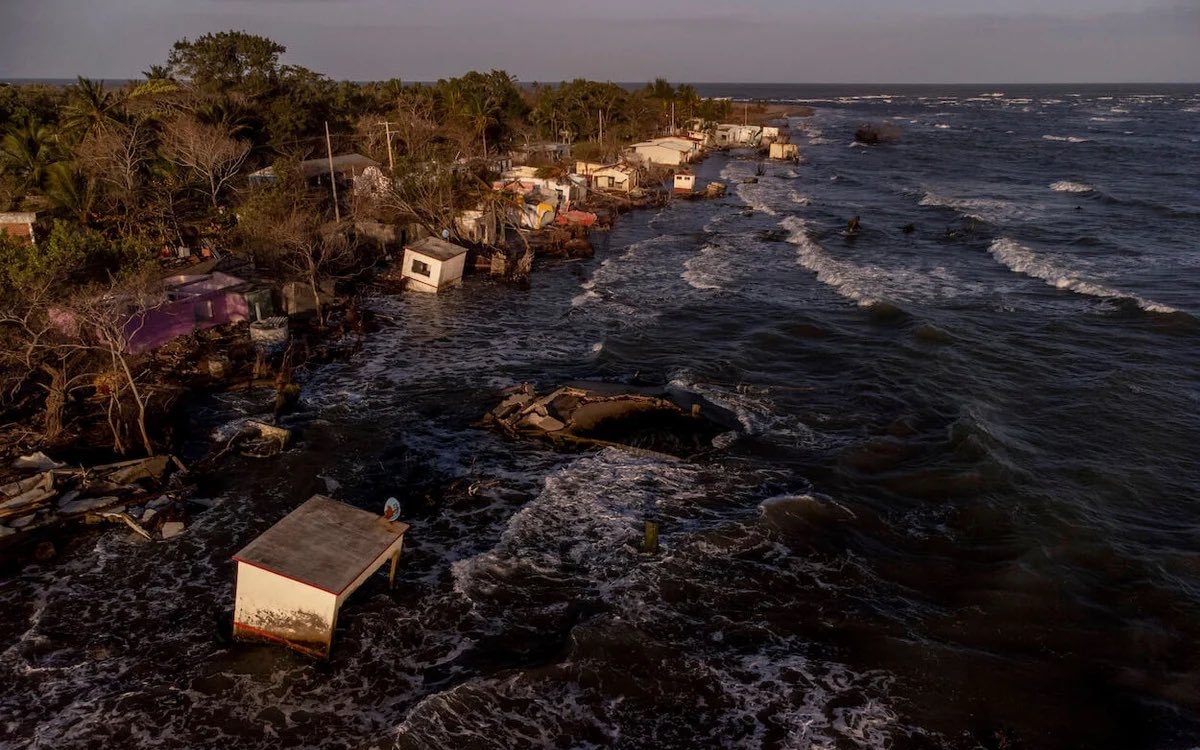Within hours of the publication of the Inter-American Court of Human Rights’ (IACtHR) Advisory Opinion OC-32/25 on the “Climate Emergency and Human Rights” (AO-32/25), the international human rights community erupted with acclaim. Academics and human rights advocates swiftly characterized the opinion as “historic”, a “landmark decision”, with one colleague declaring it “highly inspiring”. Such effusive responses raise a critical question: Does this enthusiasm hold equally across all dimensions of the IACtHR’s comprehensive analysis?
This blog post examines that question concerning the IACtHR’s treatment of the nexus between climate change and human mobility. We find that AO-32/25 represents a transformative moment in international legal doctrine on climate-induced displacement and shows why the IACtHR’s conclusions constitute not merely an incremental development, but a fundamental reorientation of the human rights law approach to one of the most pressing challenges of our time.
The IACtHR’s analysis on the nexus of climate change and human mobility, concentrated in twenty-one remarkably dense paragraphs (paras. 414-434), delivers a series of long-overdue legal clarifications that fundamentally reconceptualize climate-induced human movement. Most significantly, this decision shifts the paradigm from treating climate-induced displacement as merely a humanitarian concern to establishing it as a matter of binding human rights obligations for states. Moreover, AO-32/25’s contribution extends beyond doctrinal innovation to guidelines for practical implementation. By articulating specific state duties, emphasizing reinforced due diligence standards, and – most prominently – calling for new legal categories for climate-displaced people, the opinion provides advocates with powerful tools for advancing the rights of millions displaced by the climate crisis. However, as we show below, while AO-32/25 establishes an overall valuable framework for climate-induced mobility, it would have been beneficial to see more detailed guidance on integrating these protections into existing refugee law mechanisms.
The depth and nuance of the IACtHR’s analysis reflect its serious engagement with the more than 260 amicus curiae submissions and the compelling testimonies delivered during hearings in the Bahamas and Brazil in 2024. This methodological approach positions the IACtHR as a leader in inclusive participatory processes, showing how lived experiences can be meaningfully incorporated into international legal doctrine.
In the following, we outline the main findings of AO-32/25 as regards the nexus between climate change and human mobility and show why the IACtHR’s conclusions constitute not merely an incremental development, but a fundamental reorientation of the human rights law approach to one of the most pressing challenges of our time.
The multifaceted nature of interactions between climate change and human mobility
Drawing upon multiple reports by international organizations and contributions from affected third parties during the consultation process that preceded issuance of AO-32/25, the IACtHR first outlines the multifaceted nature of the interactions between climate change and human mobility (paras. 414-419). It recognizes that natural disasters can directly or indirectly lead to involuntary migration and displacement in cases where they emerge alongside pre-existing situations of vulnerability and displacement factors such as conflict, violence, poverty, food insecurity, or structural inequalities (para. 416). At the same time, the effects of climate change can also affect population groups that are already enduring forced displacement, thereby exacerbating the existing risks to which they are already exposed and triggering renewed displacement (para. 418). In this context, the IACtHR explicitly points out that environmental impacts can jeopardise the right to peace, as climate change-induced degradation often leads to violent conflicts between the displaced population and those originally residing in the region concerned.
The IACtHR further notes that forced migration and displacement are also directly caused by climate-related loss of fertile land, droughts, rising sea levels, or drastic temperature increases, which lead to water shortages, the destruction of livelihoods, and other socio-economic uncertainties (para. 417).
Hence, the IACtHR recognises that millions of people are displaced, both within and across borders, as a result of or in connection with the effects of climate change. For example, the judges note that nearly two-thirds of all newly displaced persons in 2022 came from 15 countries that are particularly vulnerable to the effects of climate change (paras. 420f.).
Corresponding state obligations
Based on these factual findings, the IACtHR concludes that states bear several preventive and repressive obligations (paras. 422–434). On the one hand, states are obliged to take measures to mitigate forced migration and displacement resulting directly and indirectly from natural disasters and other effects of climate change. These include, inter alia, the immediate protection of sources of income, food security, water supply, and adequate housing (para. 422).
On the other hand, states must have “regulatory, political, institutional and budgetary instruments” in place to cope with involuntary climate-induced migration (para. 424f.). The IACtHR includes among the instruments states must adopt measures to mitigate risks, the provision of safe evacuation routes and supportive assistance from official institutions, as well as state plans for accommodation, return, and – as ultima ratio and strictly subject to detailed procedural guarantees (paras. 425 and 429) – relocation. In this context, the IACtHR emphasises the need to take into account particular vulnerabilities, including illiteracy, disabilities, and language barriers.
Additionally, the IACtHR pays particular attention to the need for active and effective cooperation between local, national, and regional actors involved in the conceptualization and implementation of the above-mentioned measures addressing climate-induced human mobility (paras. 430 and 432). To promote such intra- and inter-state cooperation, the judges outline a comprehensive catalogue of measures, including the facilitation of safe and regular cross-border mobility and the establishment of technical assistance arrangements to improve border management, including the search and rescue of climate-displaced persons.
Finally, and most prominently, the IACtHR explicitly demands that the states “must establish effective mechanisms” at the domestic level to guarantee the humanitarian protection of persons displaced across international borders due to the effects of climate change. These include “the establishment of appropriate migration categories such as humanitarian visas, temporary stay permits, and/or protection under refugee status or other similar status, which can provide them with protection against refoulement” (para. 433). Thereby, the IACtHR expressly referred to the Nansen Initiative, the Chile Declaration and Plan of Action 2024-2034, and the widely acclaimed views of the Human Rights Committee in Teitiota.
A Differentiated, Holistic, and Human-Centered Approach to Climate Mobility
The IACtHR‘s analysis demonstrates sophisticated legal reasoning that embraces the complexity of climate-induced human movement through a holistic, nuanced approach that systematically acknowledges varying levels of vulnerability and their relationship to mobility patterns (e.g., para. 420). This methodological choice represents a stark departure from other regional human rights courts and underscores the IACtHR’s progressive interpretive approach. Whereas its European counterpart has faced criticism for adopting state-centered approaches that disregard equity concerns and particular vulnerabilities in climate change cases, as scholars like Corina Heri have noted regarding the Klimaseniorinnen v. Switzerland decision, the IACtHR explicitly recognizes that migrant and displaced children constitute one of the most vulnerable populations, facing severe impacts on their physical and mental health and access to education (para. 434). The IACtHR emphasizes that women, Indigenous Peoples, Afro-descendant communities, peasant populations, and fishing communities face disproportionate effects from climate-induced mobility due to their dependence on natural resources and pre-existing structural vulnerabilities (paras. 403, 416, 424). This differentiated approach demonstrates that the IACtHR‘s human rights interpretation moves beyond abstract legal principles (as has been praised, for example, by Dembour) to acknowledge the lived realities of those most affected by climate displacement.
Reconceptualizing Mobility: Beyond Traditional Legal Categories
AO-32/25’s framing of human mobility transcends the narrow categorizations that typically constrain legal analysis in both human rights treaties and case law. Rather than treating mobility as a singular phenomenon, the IACtHR encompasses both voluntary and involuntary movement, as well as internal and international displacement. It even addresses immobility, i.e., situations where individuals or communities cannot or choose not to move despite climate risks, whether involuntarily due to a lack of means or voluntarily due to cultural, traditional, economic, or social ties (para. 419) – an important concept overlooked in most legal and policy frameworks.
This comprehensive approach may derive from Article 22 of the American Convention, which contains broad rights on the “freedom of movement and residence”. These guarantees span from the right to move freely within a state to non-refoulement protections and prohibitions of collective expulsion. The IACtHR builds upon this holistic understanding to include all forms of movement.
Scientific Precision in Legal Analysis
The IACtHR’s acknowledgment that climate-induced mobility is multi-causal and complex reflects a sophisticated understanding of climate science that elevates its legal reasoning. This is reflected, for example, in AO-32/25’s differentiation between sudden-onset events (such as droughts, floods, landslides, and fires) and slow-onset environmental degradation (desertification, coastal erosion, potential submersion of low-lying island states). The IACtHR’s solutions reflect this analytical sophistication, recognizing that increased disaster risks may necessitate planned resettlement from high-risk areas, acknowledging both preventive and reactive dimensions of climate mobility responses.
Following the Global Compact for Safe, Orderly and Regular Migration (2018), the opinion addresses safe mobility, a topic previously excluded from general human rights frameworks. The IACtHR fills this gap by establishing that states must guarantee protection during movement, prevent transit route risks, establish safe temporary shelters and resettlement areas, monitor and prevent human trafficking, and train personnel to assist displaced persons (paras. 428, 431, 432).
Establishing Legal Mechanisms: From Humanitarian Visas to Refugee Status
In a development of unprecedented significance, the IACtHR becomes the first human rights tribunal to explicitly order member states to establish effective legal and administrative mechanisms for cross-border displaced persons (para. 433).
Here, the IACtHR again applies its differentiated and nuanced approach, recognizing the temporal dimensions of climate displacement. The framework encompasses short-term relief measures, such as humanitarian visas or temporary stays in the aftermath of sudden-onset events, and highlights the need for longer-term protection mechanisms, such as refugee status.
Beyond Aspiration? Regional Foundations and Implementation Challenges
Considering Tigre and Rocha’s very certain conclusion that clarity and enforceability are not necessarily the hallmarks of international climate law, this advisory opinion is a big leap in the right direction to bring some clarity into the nexus between climate change and mobility. However, careful rereading raises complex questions: Can we truly celebrate this achievement? Does it reflect a utopian future, or can it be operationalized in reality?
There are several reasons for optimism. First, the IACtHR’s opinion was not crafted in a legal vacuum. Numerous Latin American states have already established concrete emergency response measures for receiving people affected by environmental disasters for over a decade. Humanitarian visas, temporary visa facilitations, and provisional protection status, amongst other tools, enable authorities to accommodate large numbers of affected persons following environmental disasters. Countries, such as Argentina, Brazil, Ecuador, Mexico, Costa Rica, and Peru have successfully implemented these instruments with explicit references to environmental disasters and climate change, with some even providing long-term residence permits. The IACtHR’s call for cooperation in migration equally builds on existing coordination mechanisms, such as the Marco de Adaptación de Cancún (para. 430). Other tools, like the Comprehensive Regional Framework for Protection and Solutions (MIRPS), could also contribute to the realization of this goal by connecting American countries with international organizations, providing guidelines and exchange opportunities while incorporating climate change as a displacement factor.
Second, research shows that IACtHR advisory opinions generate “truly transformative impact” (Saavedra Alessandri) on the protection of human rights as well as a “downstream impact”, with domestic courts using them as interpretative tools (Klingst and Marjanac). Chile and Colombia’s governments and courts’ leadership in requesting and championing this opinion positions them to lead implementation efforts throughout Latin America.
Nevertheless, there is reason to conclude that the AO-32/25 falls short of expectations in key areas. Although, as outlined above, the decision provides States with a comprehensive framework for dealing with climate-induced mobility that takes into account both emergency measures and longer-term protection needs, the IACtHR does not elaborate on how existing refugee and human rights provisions are to be applied in this context. Contrary to the claim of some intervening parties (e.g., the Center for Gender and Refugee Studies (CGRS), International Refugee Assistance Project (IRAP), Global Center for Environmental Legal Studies (GCELS)), the IACtHR did not establish detailed guidelines on how to specifically take into account the manifold effects of climate change within the framework of the Geneva Refugee Convention, the right to asylum under the American Convention’s Article 22(7), or the principle of non-refoulement. This shortcoming is particularly evident as regards the Cartagena Declaration, whose outstanding importance for Inter-American refugee law we have already highlighted elsewhere (see here).
In this context, AO-32/25 also lacks explicit reference to the Inter-American Commission’s Resolution No. 2/24, which has already provided additional interpretive guidance, establishing that states must recognize that climate change impacts can trigger situations requiring international protection under the expanded Cartagena Declaration’s refugee definition (paras. 29f.) and when interpreting non-refoulement (paras. 36f.). The same applies to the vast number of administrative court rulings that have already recognized the interplay between harmful effects of climate change and the humanitarian situation in the country of origin based on existing (inter)national legislation, and which have also been brought to the attention of the IACtHR during the consultation process (see here, here and here).
In conclusion, and despite selective criticism, the convergence of existing regional practices, expanding legal frameworks, and demonstrated political will suggests this opinion represents more than aspirational writing. If regional innovations can evolve into the IACtHR‘s comprehensive framework, what we celebrate today as a regional achievement may become a global standard for future climate mobility protection. If this opinion has taught us one lesson, it is that dreaming “big” in human rights protection is, on rare occasions, rewarded.






